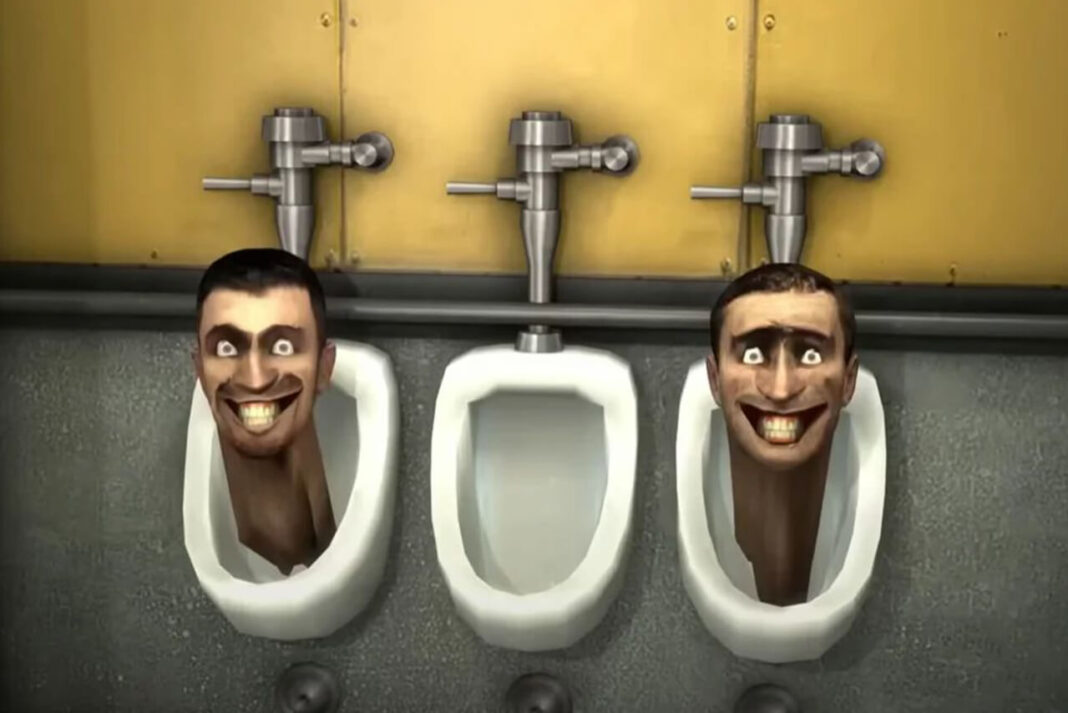“Skibidi Toilet” videos, which have become a viral trend across digital platforms in recent years, have reached millions of viewers in a short time, gaining immense popularity, especially among children. However, there are growing concerns that these videos may have negative effects on some children. The toilet-themed content can act as a trigger for children who already experience toilet-related anxiety. This article aims to examine the challenges associated with toilet use in the context of anxiety disorder and panic attack symptoms by exploring the impact of the “Skibidi Toilet” phenomenon on children.
What is the Skibidi Toilet Phenomenon?
“Skibidi Toilet” is a series of short animated videos that spread rapidly across the internet. These videos feature funny and absurd situations related to toilets. The content, visually striking and bizarre, is particularly entertaining for children, which has led to its rapid rise in popularity. The widespread sharing of these videos and their inclusion in meme culture have made them easily accessible to children.
However, for some children, these videos can be scary and worrisome. In particular, children of certain ages may already experience fears or anxieties related to the toilet. Thus, concerns have emerged about whether toilet-themedand grotesque content, such as “Skibidi Toilet”, might act as a trigger for such fears.
Anxiety Disorder in Children
Anxiety disorder is a common psychological issue in childhood, involving intense fears, anxieties, and panic that disrupt the child’s normal life. These disorders manifest as extreme reactions to external stimuli. Children may develop strong anxiety about certain situations, places, or objects. For some, the act of toilet use can be a source of significant concern.
Concerns About Toilet Use
During the toilet training process, some children may develop fears or anxieties related to using the toilet. These concerns can be triggered by factors such as the loud noise of the toilet, the fear of falling in, or the anxiety of being alone. Additionally, negative experiences with the toilet, such as fear of getting stuck or facing unexpected events, can further exacerbate these concerns.
Such fears are most common in preschool and primary school-aged children. However, these anxieties typically decrease over time. If these fears persist, children may develop avoidance behaviors, such as difficulty using the toiletor refusing to go. These behaviors can negatively affect the child’s quality of life and disrupt their social relationships.
Effect of Skibidi Toilet Videos
“Skibidi Toilet” videos can trigger anxiety in some children due to their grotesque and toilet-themed nature. Children have a vivid imagination, and the bizarre or frightening images they see can leave a lasting impact. For children who already fear toilets, exposure to such content could worsen their anxiety, making it even harder for them to use the toilet.
Children prone to obsessive-compulsive disorder (OCD) or specific phobias may be particularly affected by content like “Skibidi Toilet”. When a child with a toilet phobia watches these videos, their fears about toilets may intensify, leading to difficulty using the toilet. This could potentially trigger anxiety crises or panic attacks in the child.
Panic Attack Symptoms in Children
The symptoms of a panic attack in children can manifest in various ways, including:
-
Physical symptoms: Common symptoms include rapid heartbeat, sweating, chills, nausea, and dizziness.
-
Avoidance behaviors: Children may begin avoiding situations that trigger anxiety. A child with toilet anxietymight refuse to use public restrooms, prefer only certain toilets (like at home), or hold in their urine for extended periods.
-
Behavioral changes: Anxiety can cause children to exhibit behaviors such as tantrums, crying, or withdrawal in situations that make them anxious.
-
Insomnia and lack of appetite: Children suffering from anxiety may also experience sleep disturbances and a decrease in appetite.
These symptoms can significantly affect the child’s daily life, and if they persist for an extended period, seeking professional help from a specialist may be necessary.
The Role of Parents Against the Skibidi Toilet Phenomenon
Parents should be vigilant about the content their children are exposed to on the internet. While “Skibidi Toilet” is marketed as fun and entertaining, it could have negative effects on some children. Parents should monitor whether children experience anxiety about toilets after watching such videos.
If parents notice signs of anxiety, they should take it seriously and, if necessary, consult a specialist. It is also important to maintain open communication with children, allowing them to express their feelings about the content they consume and share their thoughts.
How Can We Prevent Anxiety and Fear About the Toilet?
-
Creating a Comfortable and Safe Environment
-
For young children: Using a toilet seat reducer or stool can help the child feel more comfortable and confident. This eliminates the fear of falling off the toilet and reduces their anxiety.
-
-
Using Games and Stories for Support
-
Incorporating games, stories, and toys into toilet training can make the process more enjoyable. For young children, making the toilet experience feel like a game can ease their anxiety.
-
-
Using Positive Reinforcement
-
Positive reinforcement, such as praising, encouraging, and rewarding children when they use the toilet correctly, helps them build a positive relationship with toilet habits.
-
-
Allowing Gradual Familiarization Without Pressure
-
Allowing children to get used to the toilet process gradually and without pressure reduces their anxiety. Forcing children to use the toilet when they are scared can increase their fears, so patience is key.
-
-
Being a Role Model
-
Parents can model good toilet habits by using the toilet themselves in front of their children. Children often learn by observing, so seeing parents use the toilet helps normalize the activity.
-
-
Answering Questions About the Toilet
-
Children often have questions about the toilet, such as, “Why do I need to go to the bathroom?” or “Why does the toilet make so much noise?” Providing clear and simple answers can help relieve their anxieties.
-



